Buenos Aires: A capital in crisis
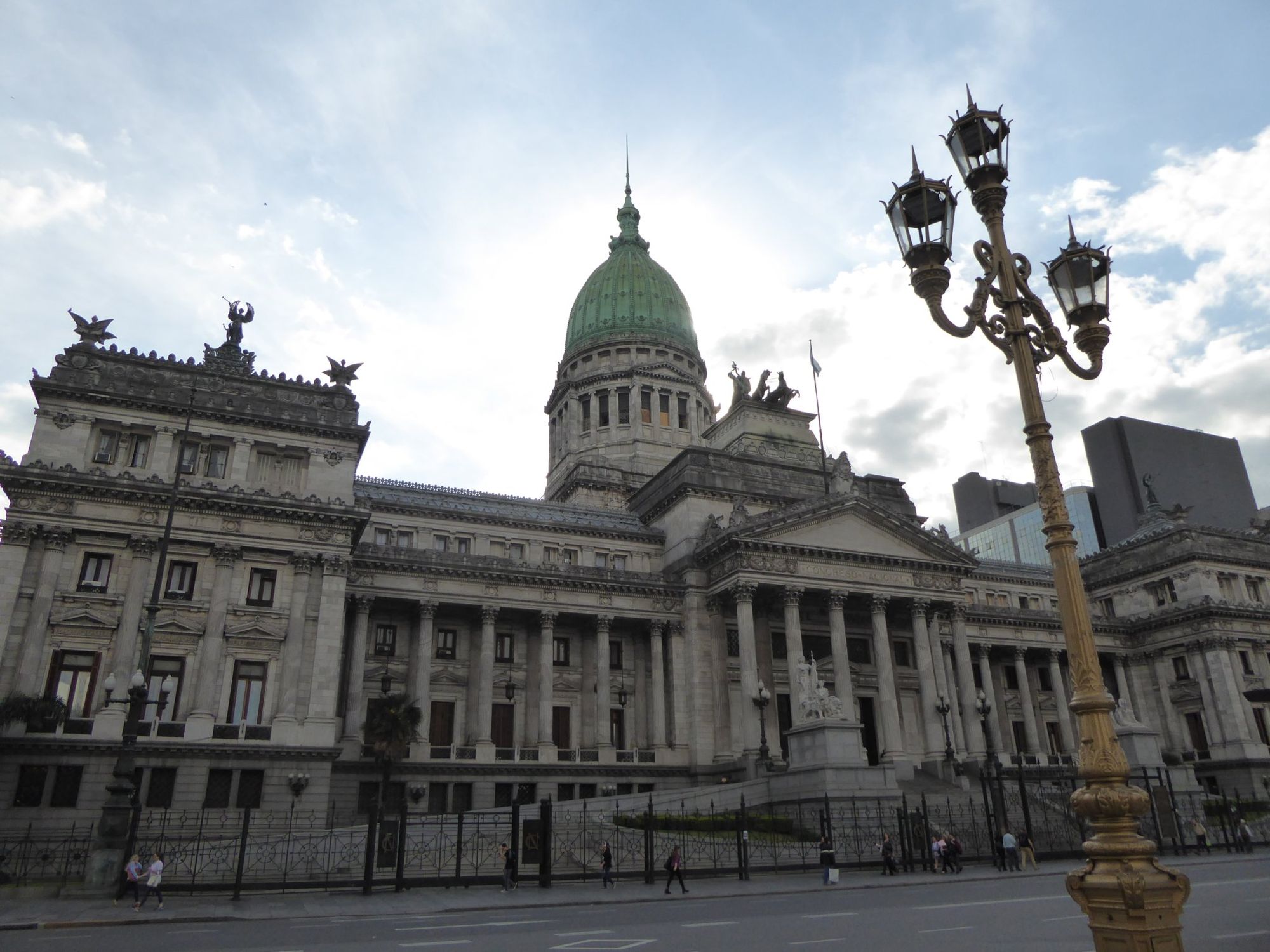
On this trip it seems like we keep arriving in countries in the midst of a crisis.
The night before we were due to catch the ferry from Uruguay to Buenos Aires, we found out that a general strike was taking place in Argentina the following day, with businesses, ports and most public transport shutting down for the day. Luckily our ferry was still operating, and we managed to find one of the few taxi drivers still plying their trade during the strike, who happily overcharged us for the short ride to our apartment.
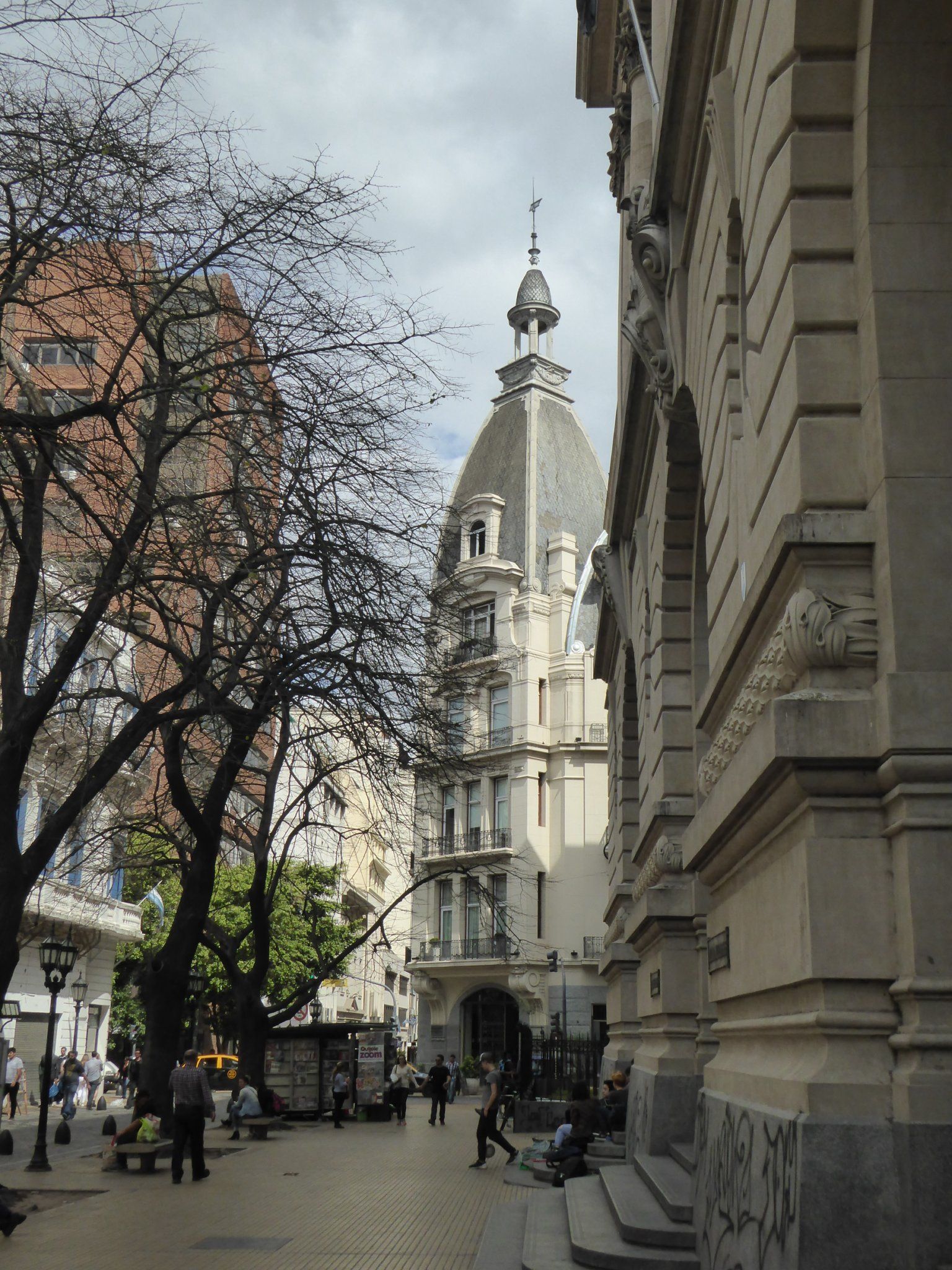
Argentina seems to exist in a state of perpetual crisis, lurching from one economic crash to the next, but it hasn't always been that way. At the beginning of the 20th century Argentina was one of the ten richest countries in the world, with a diverse and robust economy that outperformed that of many European nations. This golden age is reflected in the grandiose buildings that line the streets of Buenos Aires, esepecially in affluent neighbourhoods such as Recoleta, where we were staying. If it wasn't for the fact that the signs were in Spanish we could almost have been in Paris, and there seemed to be another opulent palacio, museum or theatre around every corner.
But Buenos Aires is also tinged with sadness, like an aristocratic old lady who's lost her husband and turned to gin. On the more neglected side streets many of the elegant facades are streaked with grime, some abandoned and crumbling into disrepair, others plastered in anti-government graffiti. Argentina is in the midst of its worst economic crisis for years, and the value of the Argentine peso has collapsed since the president, Mauricio Macri, was forced to go cap in hand to the IMF for a bailout earlier this summer. When we were planning our trip, £1 was worth 35 pesos, but it now buys you about 50. It's been good for us, as it's made everything a lot cheaper, but it's bad news for ordinary Argentinians, and inflation is currently running at about 35%.
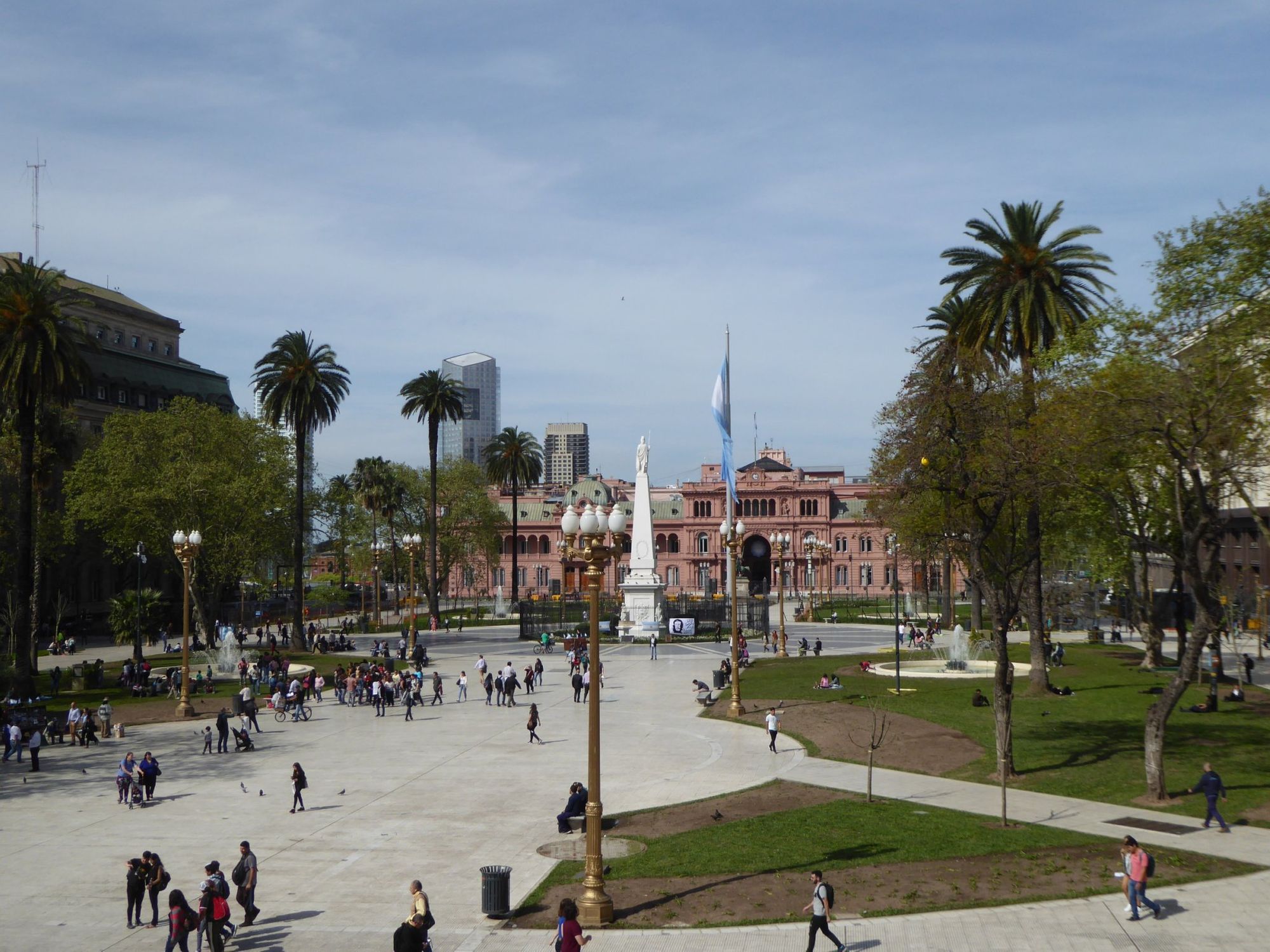
At the heart of Buenos Aires lies the Plaza de Mayo, the famous square where the Argentinian Revolution began in May 1810, and where President Macri's official residence, the Casa Rosada, is situated. We walked down to the Plaza the day after the general strike, and there were still banners and police barricades scattered around. Opposite the Casa Rosada is the Cabildo, the old colonial-era city hall, which is now a museum where we learnt more about the history of the city. As happens so often on our travels, we discovered that this is another part of the world that our country once invaded. British forces briefly occupied Buenos Aires in 1806 during the Napoleonic Wars, when Spain was allied with France, though the city was soon liberated again by an army from nearby Montevideo.
There are also frequent reminders all over Argentina about the ongoing dispute over the Falkland Islands. The islands are always included on maps of Argentina (as well as, bizarrely, the slice of Antarctica that Argentina lays claim to), and the phrase Las Malvinas son argentinas ('The Falklands are Argentinian') is a common sight; we've seen it on war memorials, on banners at protests, and even on the back of buses. But we haven't encountered any animosity when we tell people where we're from, and no one has even mentioned the Falklands to us.
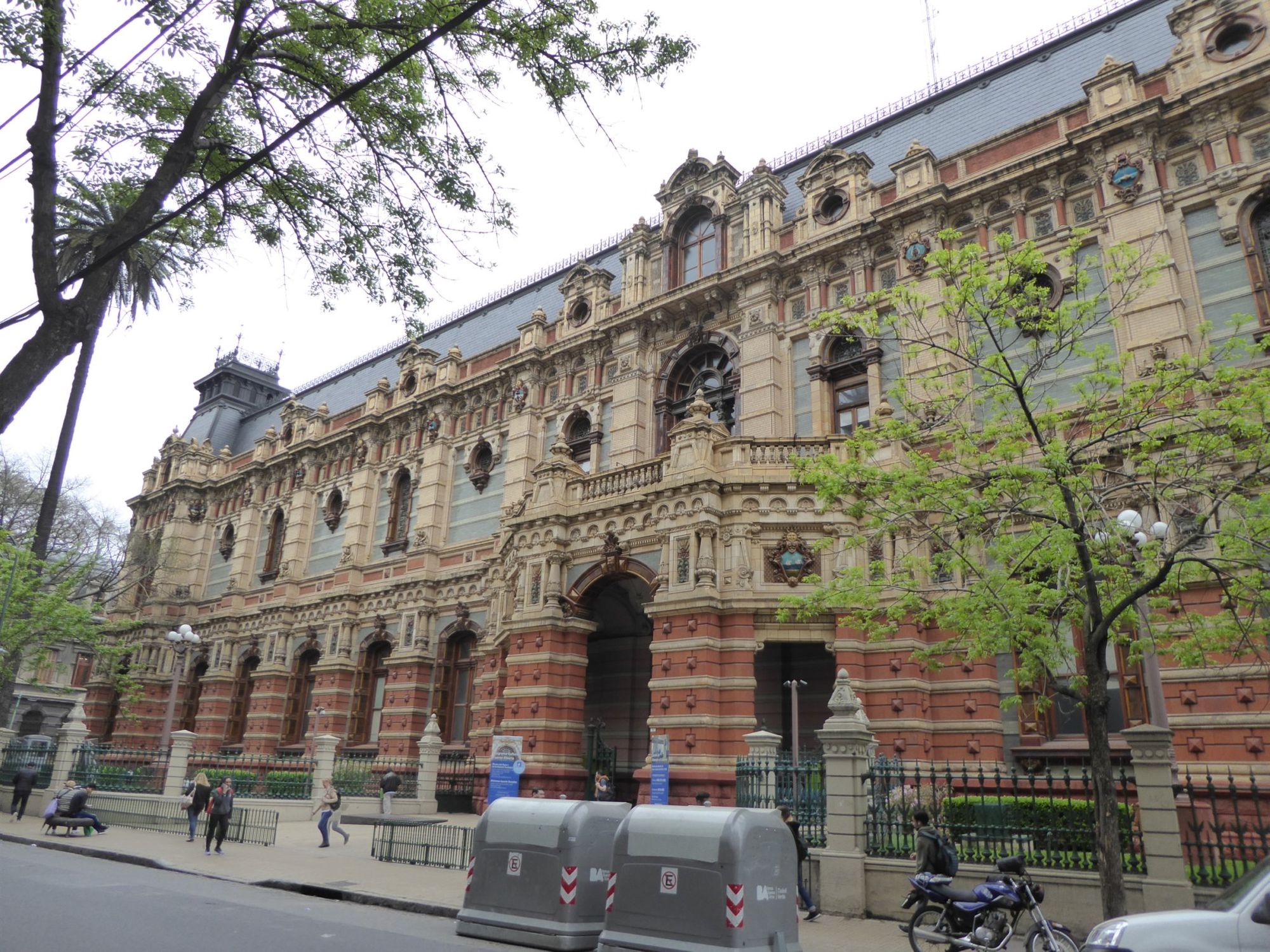
Nevertheless, we were happy to learn that not every British contribution to Argentina's history has been negative. One of the more unusual museums we visited in Buenos Aires, on the recommendation of a friend, was the Palacio de Aguas Corrientes (the Palace of Flowing Waters), a former water pumping station in Recoleta. As the population of Buenos Aires exploded in the 19th century, the city began to suffer epidemics of cholera and typhoid, and the authorities decided that a modern system of running water and sanitation was required. The British were pioneers in this field, and the new system was based on a design proposed by the British engineer John Bateman.
It may not sound like the most exciting tourist attraction, but the Palacio de Aguas Corrientes is a spectacular building that was conceived as a monument to progress and modernity. The facade conceals a stack of twelve huge metal water tanks, part of which now houses a museum where we joined a free guided tour. We learnt about both the city's sanitation system and the building itself, designed by a Swedish architect and covered in over 300,000 tiles transported to Argentina by boat from Royal Doulton in the UK. There was also an interesting exhibition of toilet designs over the years, including the grim-sounding 'slop sink' and a bizarre toilet/bidet hybrid that never quite caught on.
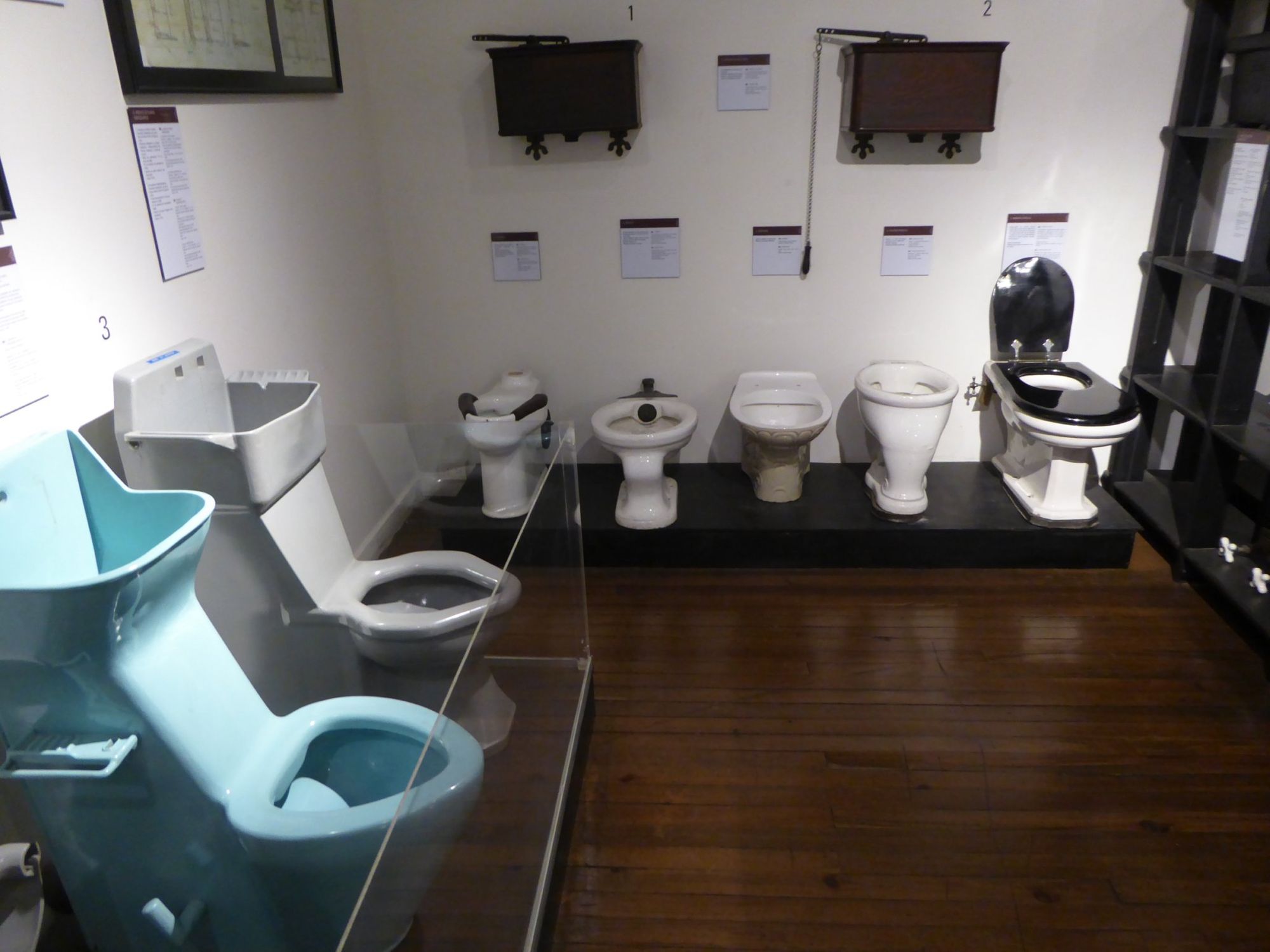
Many of the more impressive buildings in Buenos Aires were built around the turn of the 20th century, but there are also reminders of the Spanish colonial period, particularly in the neighbourhood of San Telmo, just to the south of the city centre. We enjoyed a morning walking San Telmo's cobbled streets, the heart of the city's tango scene, although we decided to give the touristy dance shows a miss. San Telmo has a bohemian feel, with arty boutiques, shops selling dusty antiques and an indoor market full of enticing food stalls serving everything from Vietnamese pho to gooey Swiss raclette.
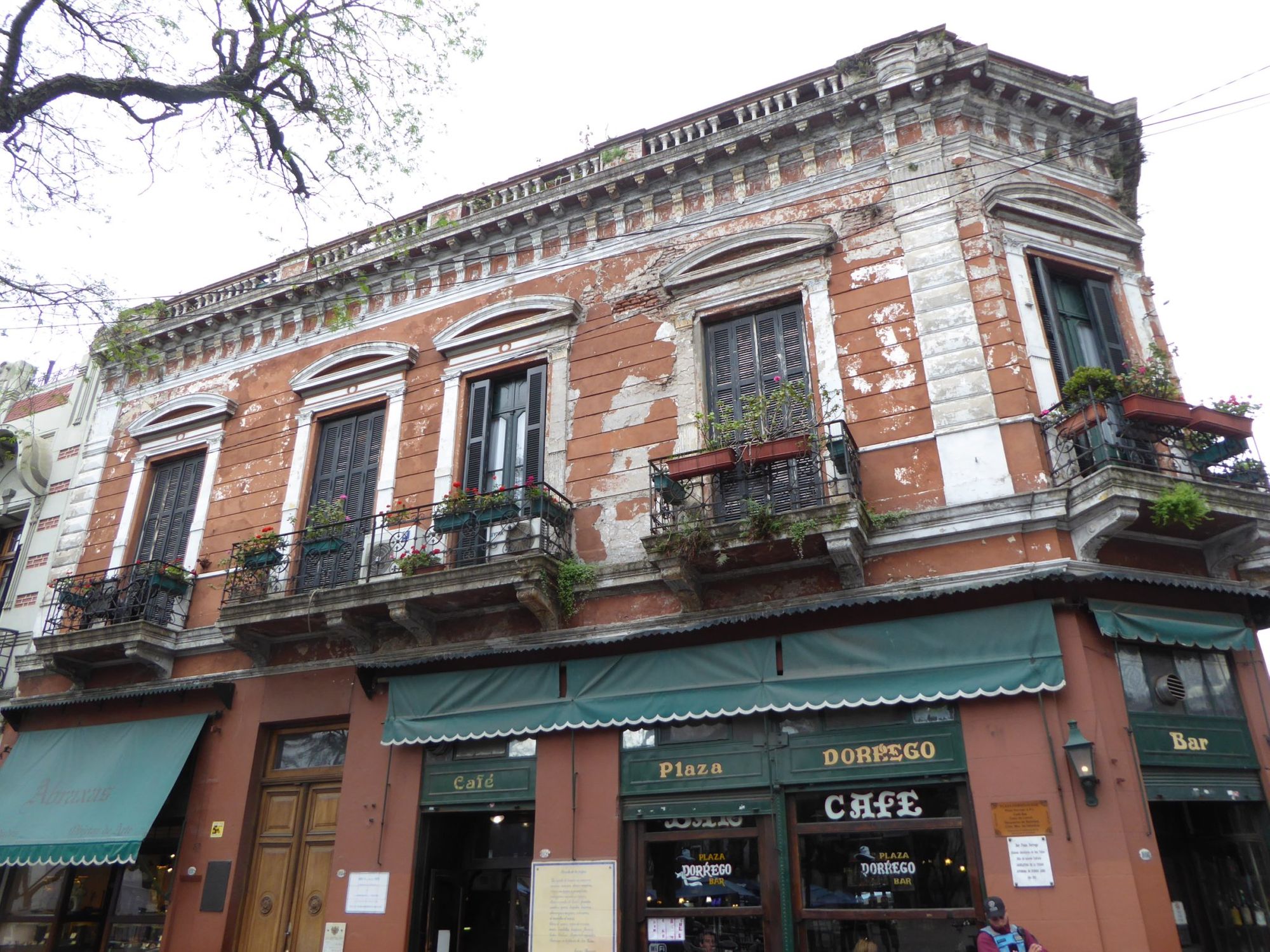
From San Telmo we took a bus further south into La Boca, home of the famous Boca Juniors football club. La Boca is a pretty rough neighbourhood, but it's also home to one of the city's best known tourist attractions. At the bus stop we were accosted by a friendly local lunatic, who tested the limits of my Spanish vocabulary as he told me about the massage room he had in his house, asked me whether we'd ever been to Egypt, and advised us to try white water rafting in Mendoza. He was also convinced that we were German, and told me that he had a friend in Peru who came from the north of France, seemingly in the expectation that I might know them.
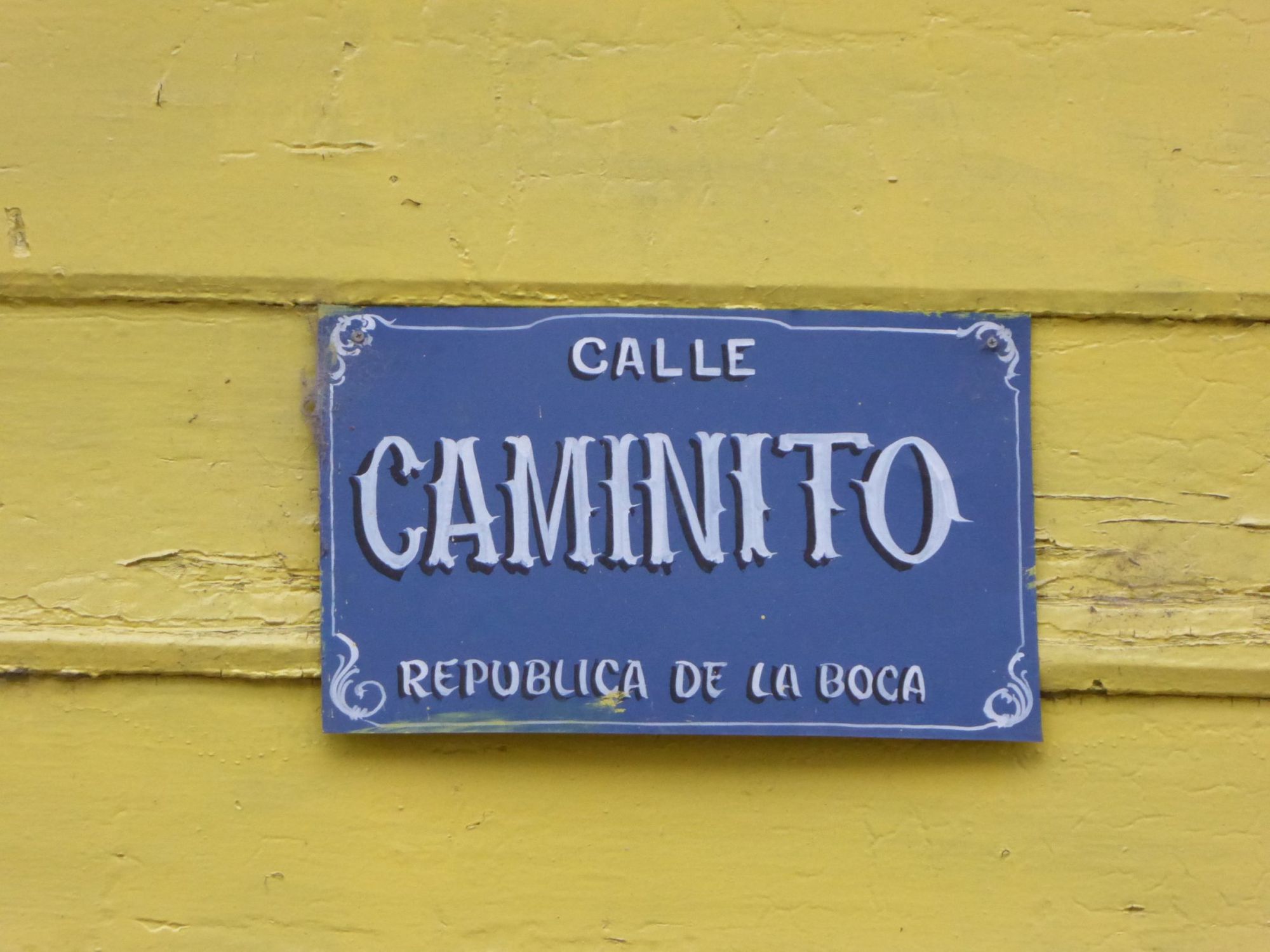
We eventually managed to shake him off, and after a short ride on a packed bus through some pretty run-down streets we got off in a bizarre little enclave, where all around were shops selling fridge magnets, poor quality steak restaurants and people dressed as tango dancers posing for photos. The reason for this circus of tourist tat is the small street known as the Caminito, a sort of open-air museum where the houses are painted in an array of bright colours, in a style that was typical of the immigrant neighbourhoods around the port in the late 19th century. I found it a bit of a strange place; perhaps it was the gloomy skies overhead taking away some of the sheen, but it just seemed a bit of a tourist trap. There seemed to be little to do other than take a few pictures, buy a fridge magnet of the place you've just taken a picture of, then get the bus back to a nicer part of town.
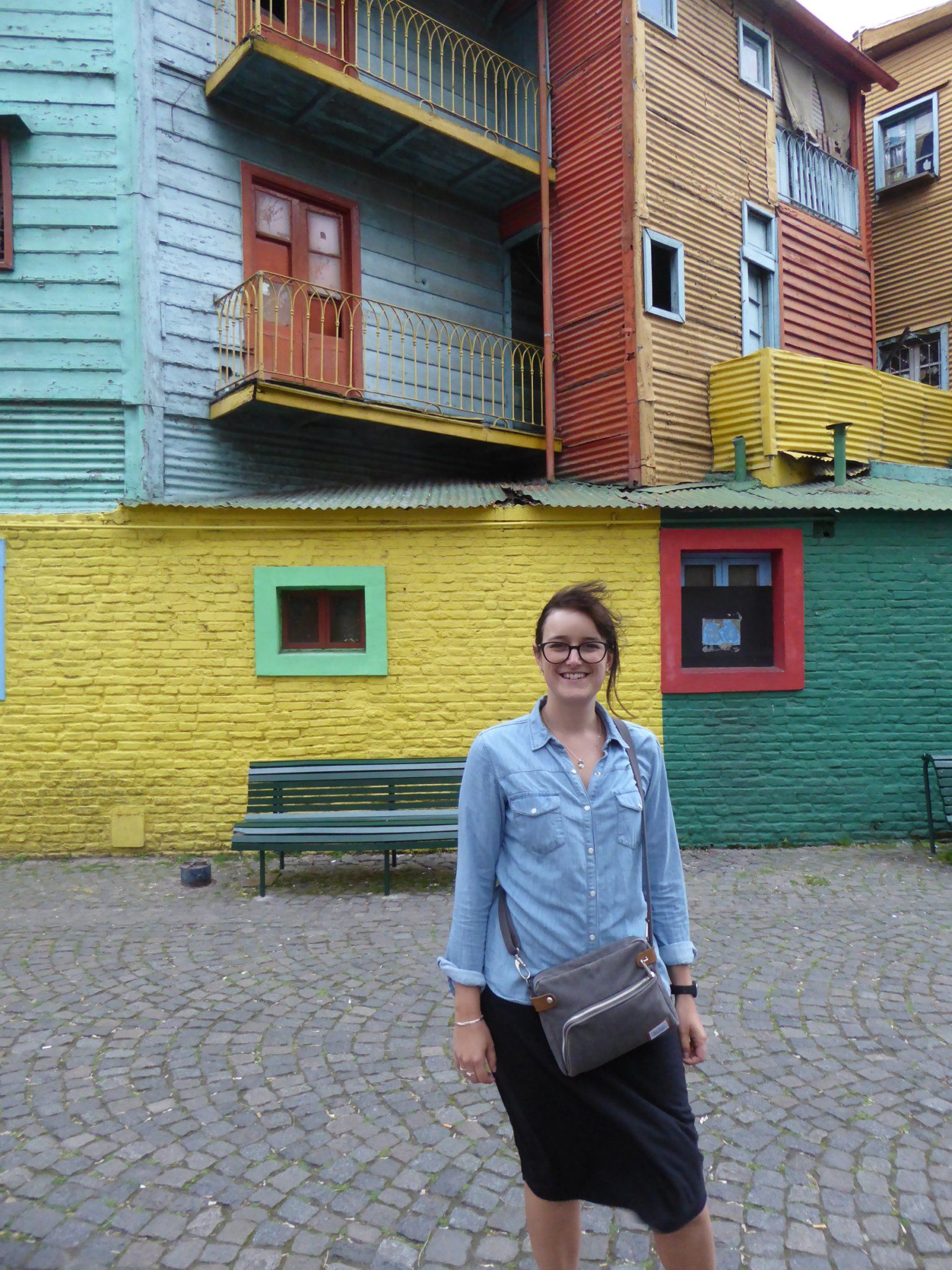
One neighbourhood that we did enjoy spending time in was Palermo, in the north of the city. Palermo is full of great bars and restaurants, and we had dinner there a couple of times, including at the legendary Parilla Don Julio, where we were served amazing ribeye steaks the size of a hatchback. Palermo also has some excellent museums, including MALBA, a small but superbly laid out collection of 20th century Latin American art. Unlike some art galleries it didn't assume a certain level of pre-exising knowledge or interest, and each section presented a different modern art movement, placing it in a Latin American context. Highlights included pieces by Frida Kahlo, Diego Rivera, Fernando Botero and a whole load of other artists that I'd never heard of.
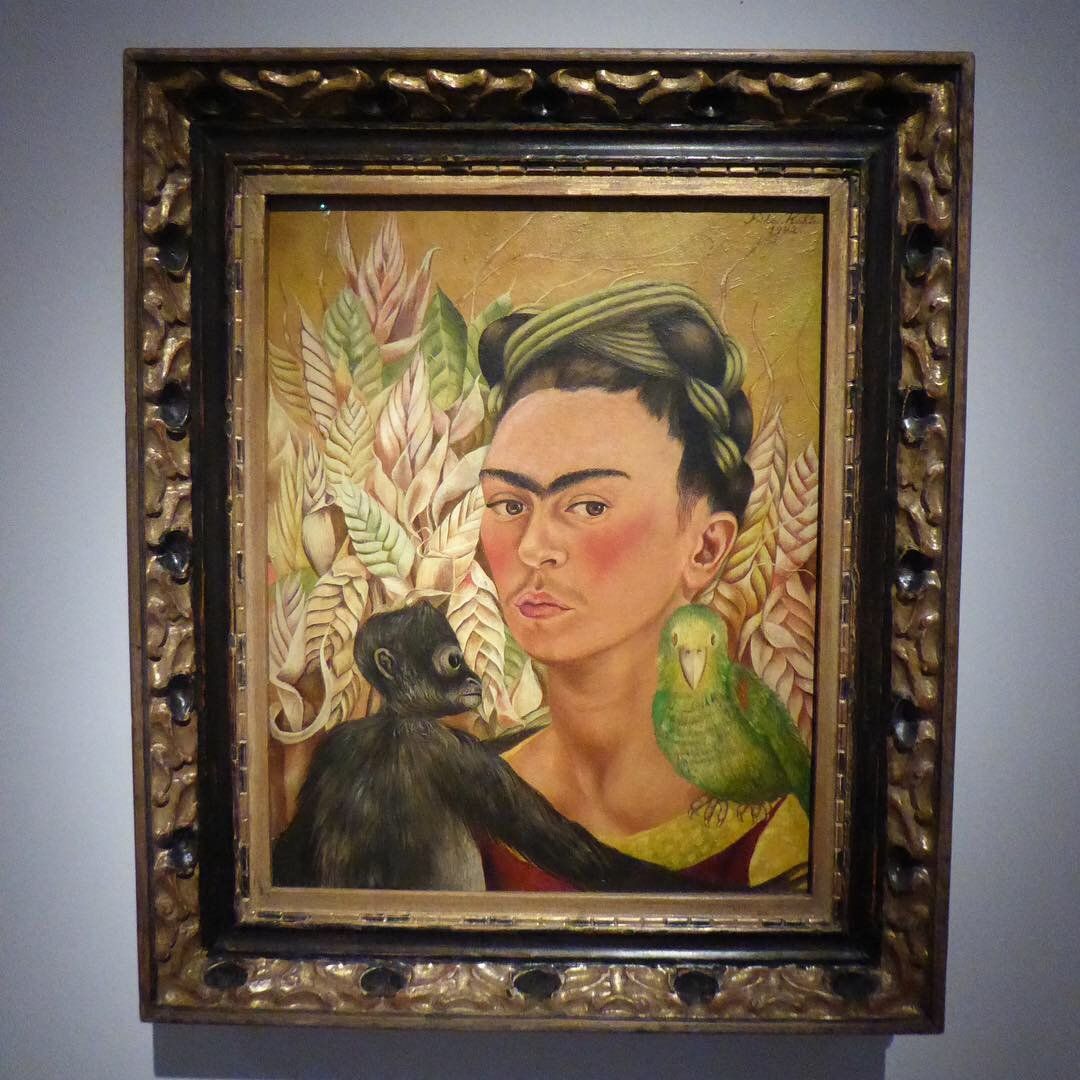
The other museum we visited in Palermo was the Evita Museum, dedicated to Argentina's most famous first lady, though in truth it was more of a shrine than a museum, with little in the way of context or balance. The museum celebrated Eva Perón's achievements, such as her work to win women the vote in Argentina and the help that her foundation provided to the poorest members of society. But it also skipped over things like the opposition to her husband's policies, the accusations of authoritarianism and the eventual overthrow of the government, with more emphasis on the different dresses she wore during her short but eventful life.
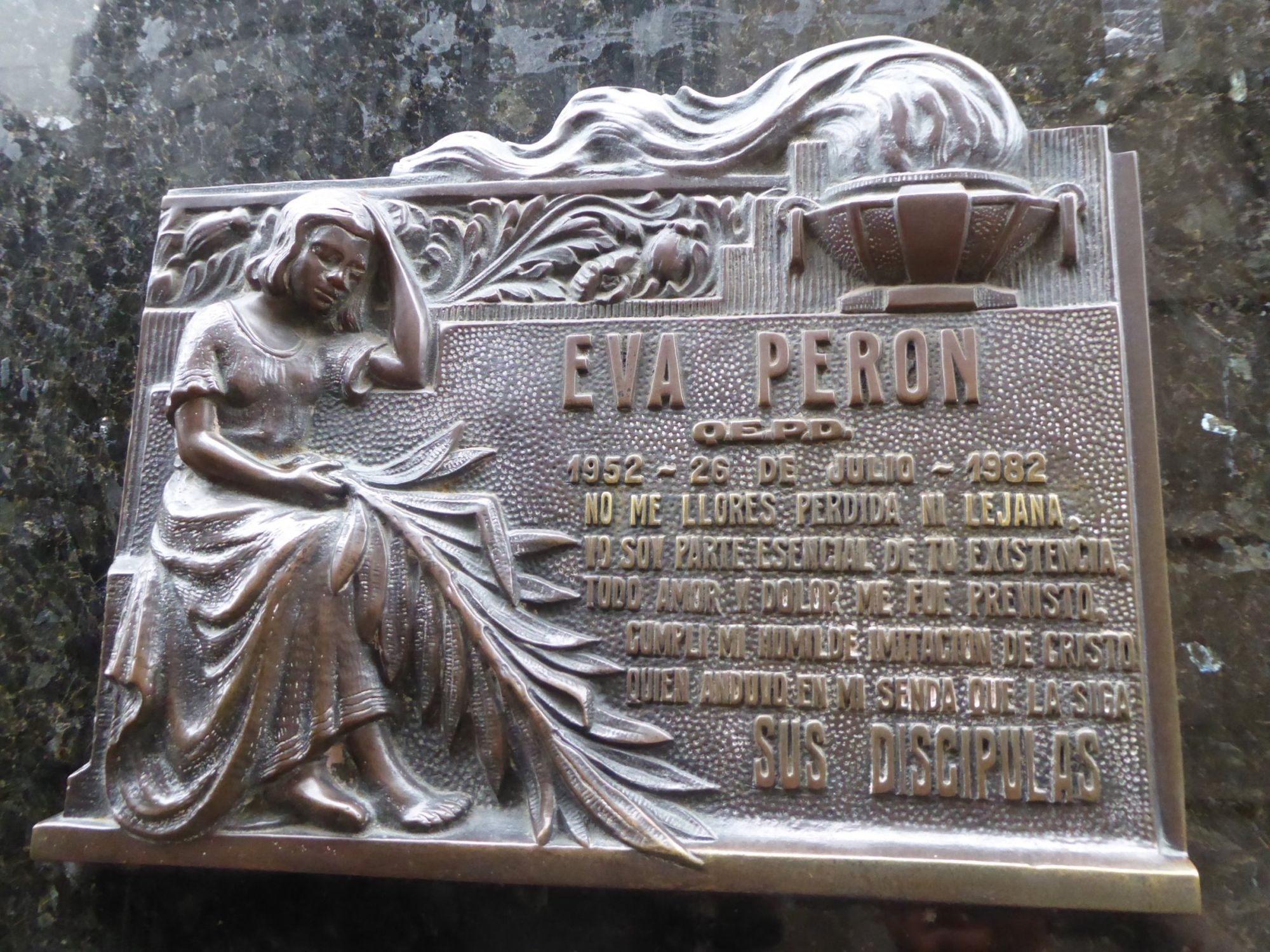
Today Evita is buried in Recoleta Cemetery, along with many of Argentina's most celebrated politicians and wealthiest families. The huge mausoleums that line the cemetery's 'streets' range from the impressive to the frankly vulgar, towering monuments to the wealth and prestige of their disintegrating occupants. Some of the tombs are lovingly maintained, while others have fallen into disrepair, and in some cases the masonry has fallen away to expose the wooden coffins to the elements. I imagine it would be a pretty spooky place after dark, and it would be a great place to shoot a death metal video.
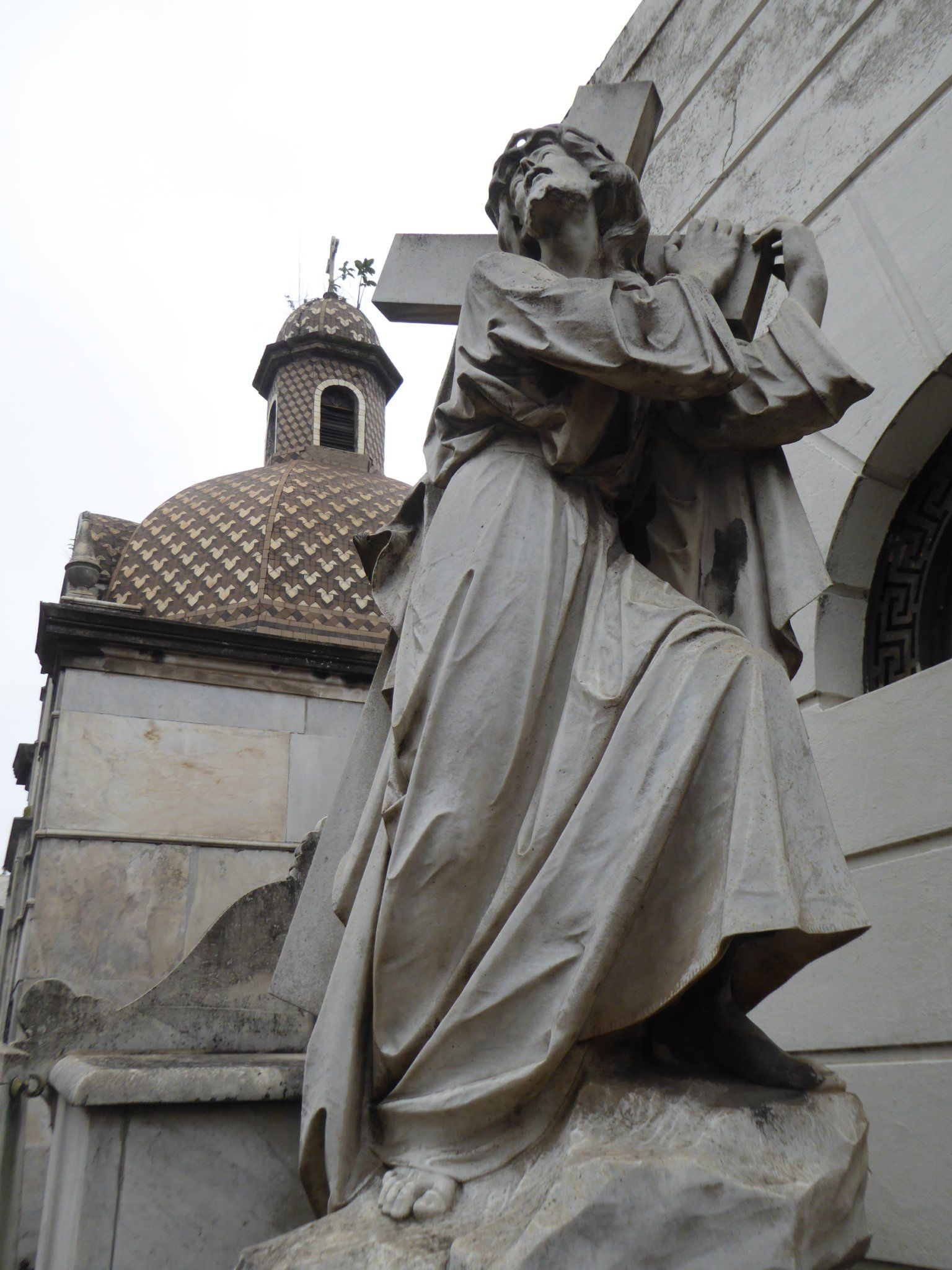
Evita's grave is actually rather modest in comparison to many of the tombs in Recoleta, tucked away on one of the narrower passages. But the legacy of the Peróns is still keenly felt in Argentina, with a political system that remains divided between the supporters and opponents of Peronism, each blaming the other for the problems that continue to prevent Argentina from fulfilling its potential.

